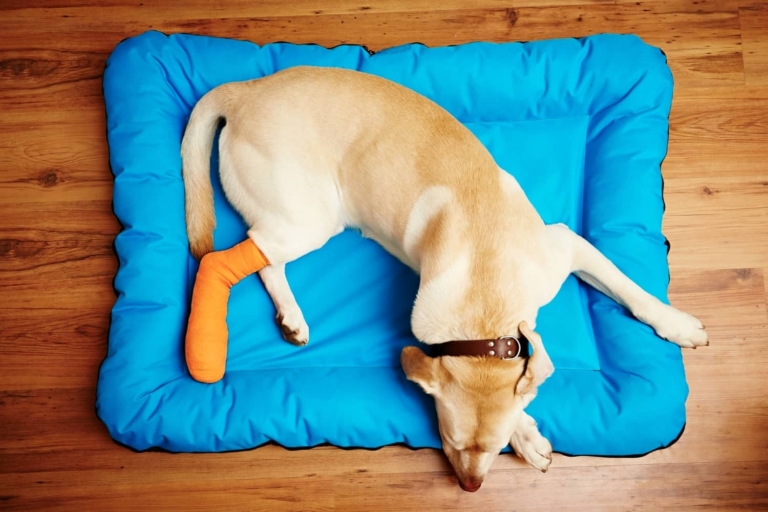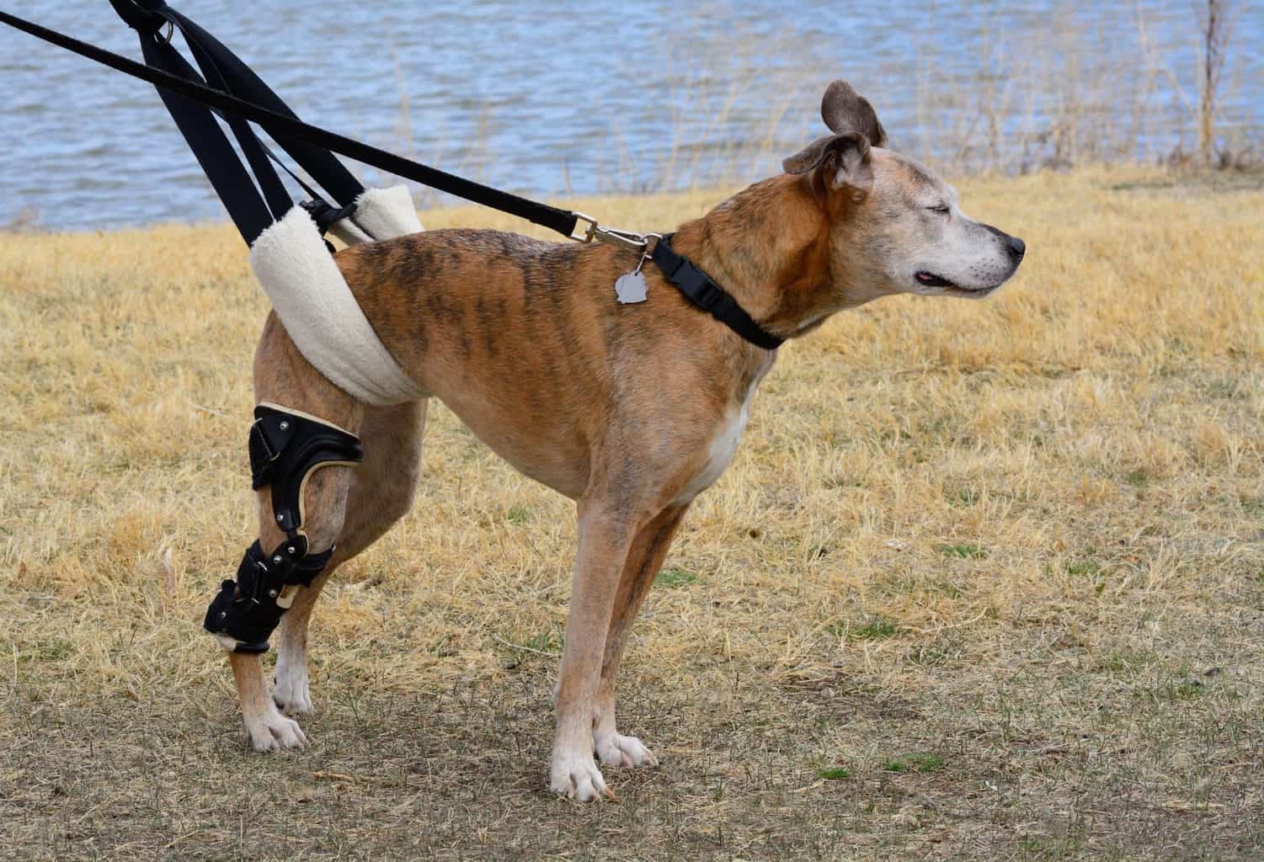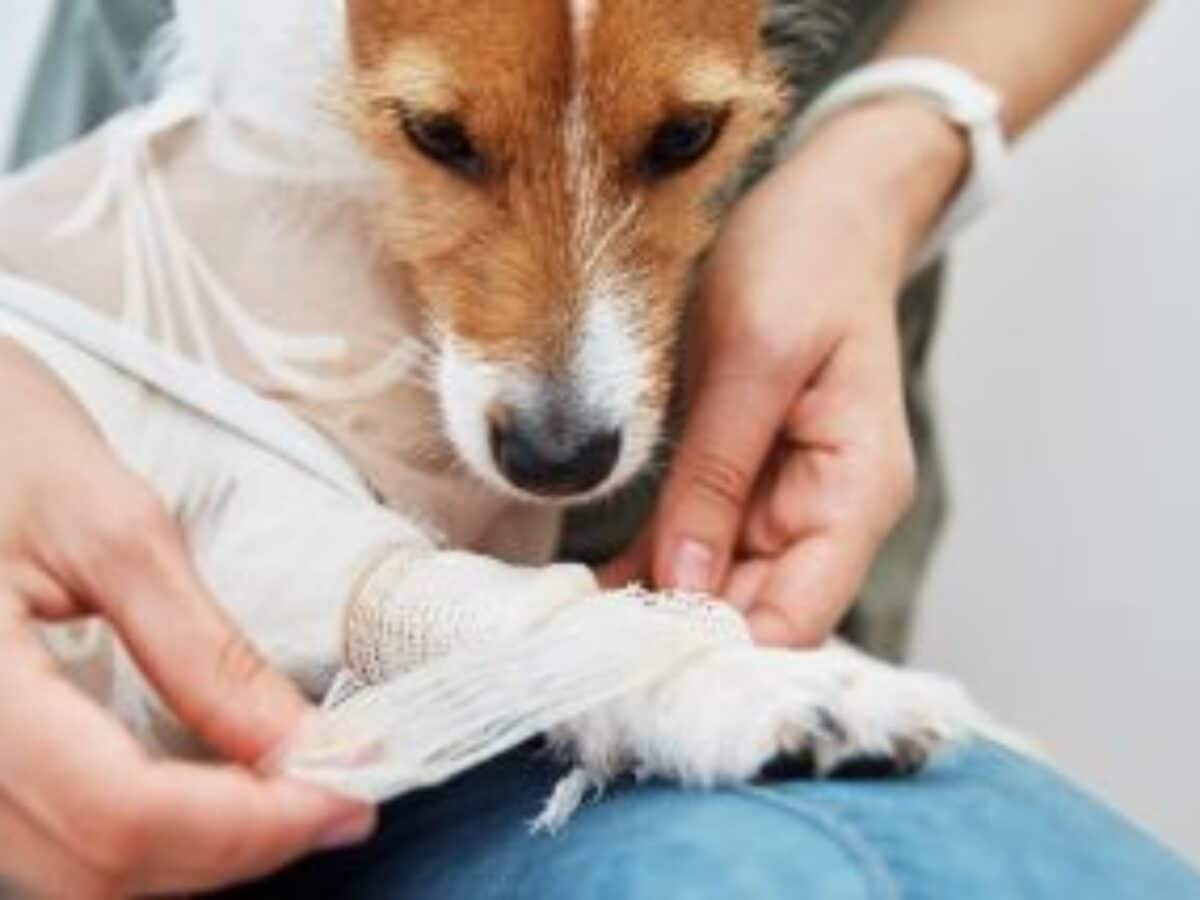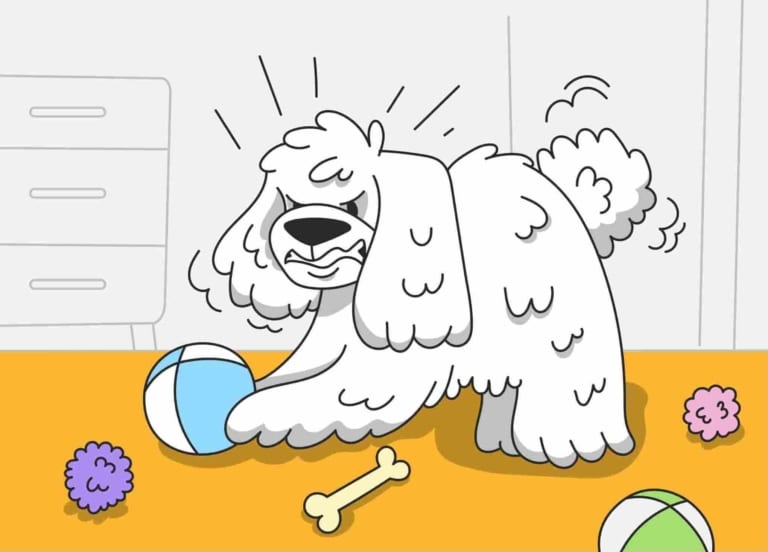Limping in a dog isn’t always an obvious injury. Sometimes a dog will just lift his leg slightly or change his gait for a few seconds, and that’s a sign that something is wrong. It’s important for owners to be able to distinguish between innocent discomfort and symptoms of a serious problem that requires an immediate response.
Possible causes of lameness
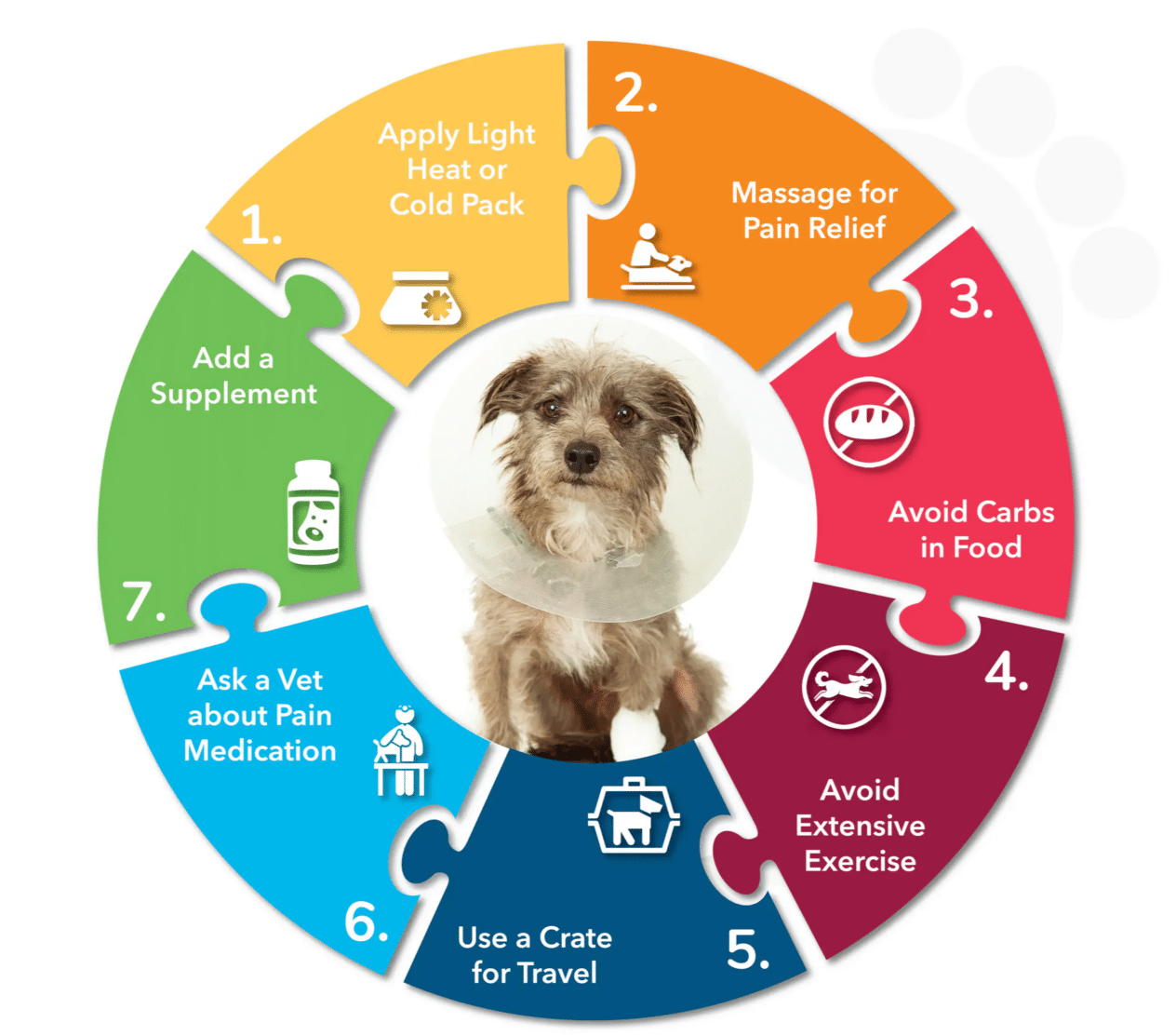
There are many causes of lameness in dogs, from the simplest to the most critical. Most often it is mechanical damage: sprains, bruises, cuts, foreign bodies in the pads of the paw (e.g. splinters or spikelets), insect bites or abrasions after a brisk walk. But there are also deeper causes: arthritis, hip or elbow dysplasia, cruciate ligament rupture, osteochondrosis, neurological disorders or even tumors. Degenerative joint changes are common in large breeds, especially at older ages. In puppies, lameness may be associated with impaired bone development or growth pains. Also, sometimes a dog may limp after a vaccination or injection if a muscle or nerve has been injured.
Gradual onset vs. sudden pain
If the lameness developed gradually – for example, the dog is putting less and less weight on the paw each day – it may indicate a chronic process: inflammation, arthritis, ligament problems or degenerative disease. If the dog suddenly cries out and begins to carry the paw on weight – it is more like an acute injury or a foreign body. With gradual lameness, the animal usually continues to run, but with noticeable discomfort, with sudden lameness – may refuse to move, hide, lie down and not allow you to touch the painful paw. Distinguishing the type of onset helps the owner to orientate how urgent the reaction should be.
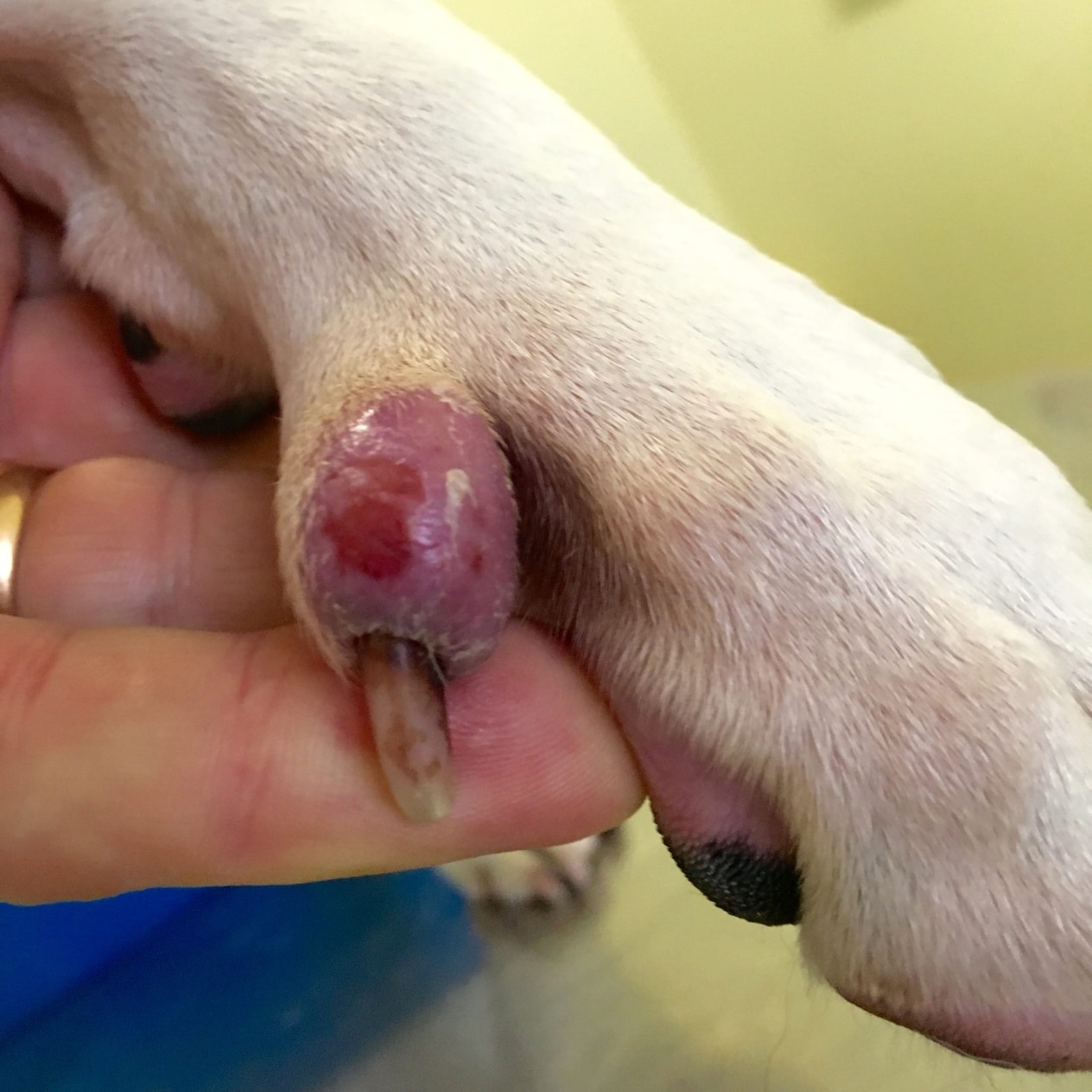
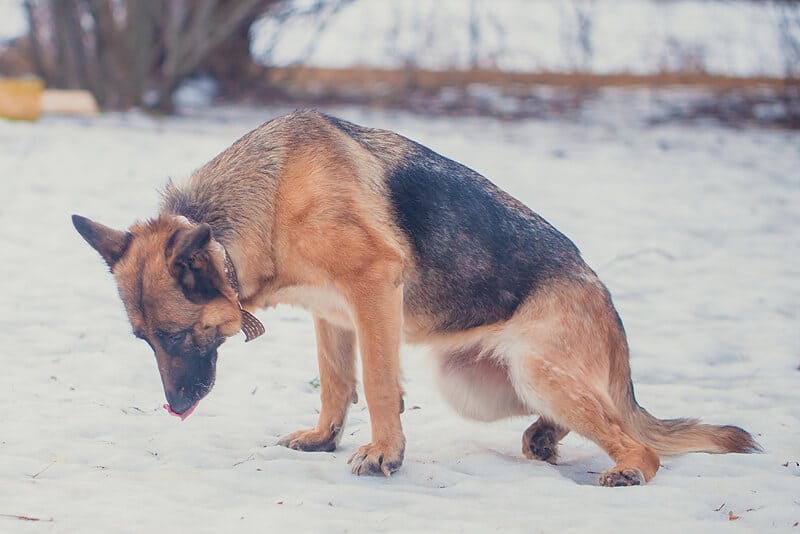
Diagnosis and treatment
The first thing to do is to carefully examine the paw for scratches, swelling, cuts, splinters or inflamed areas. If visually everything is normal, but the lameness continues, veterinary diagnosis is needed. This usually includes palpation, checking the amount of movement in the joint, sometimes x-rays or ultrasound, and in complex cases, MRI. Treatment depends on the diagnosis, ranging from simple rest and topical remedies to surgery on the joint or surgery for torn ligaments. Often anti-inflammatory drugs, physical therapy, massage, orthopedic insoles or even rehabilitation swimming are used. In the case of arthritis – prescribe chondroprotectors, weight correction and motor regimen. All these treatments require monitoring, because improper treatment will only worsen the situation.
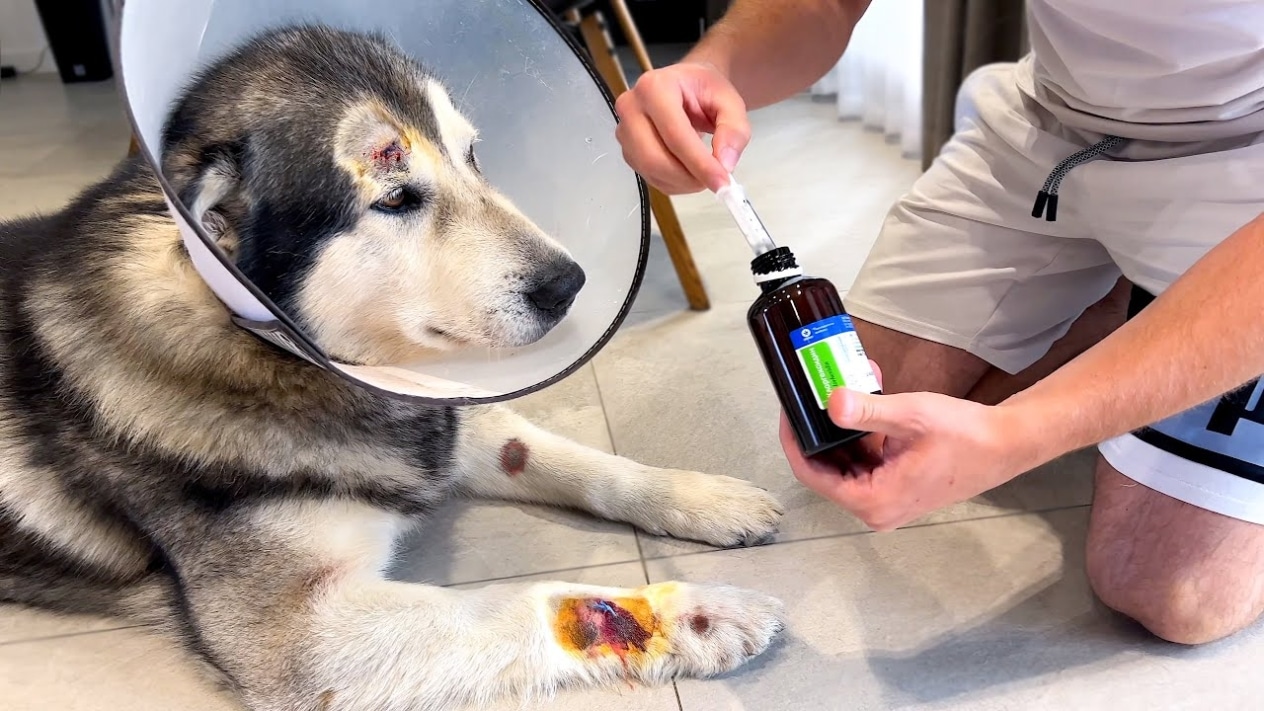
When to go to the veterinarian?
A veterinarian should be contacted in any of the following cases: the lameness lasts more than 24-48 hours, there is swelling or hot spots on the paw, the dog whines, won’t let you touch the paw, refuses to walk, get up or down. It is also important to respond if the lameness is accompanied by fever, changes in appetite or behavior. If your dog has a history of joint problems or is elderly – don’t hesitate even with mild symptoms. The earlier the cause is identified – the less pain, cost and time for treatment. Be especially careful with large breed puppies – many orthopedic problems start with a slight limp that is often ignored.

